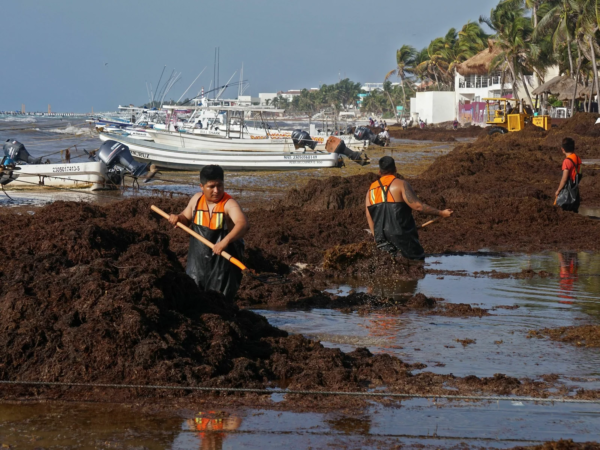The giant mass of sargassum is expected to continue to grow and peak this summer, dumping seaweed on some Florida beaches as it decomposes.
Florida beaches may soon be overrun by massive patches of the foul-smelling seaweed. It is the Atlantic sargassum belt, and while not new, it has been growing bigger than ever. This year’s belt is about 5,500 miles (8,800km) long and weighs 10 million tons. It travels throughout the year, from West Africa to the Gulf of Mexico.
Brian LaPointe, a research professor at Florida Atlantic University’s Harbor Branch Oceanographic Institute, told NBC News that this year’s seaweed bloom is a particular concern.
Despite alarming scientists for some time, LaPoitne said this year was “incredible” but that “what we’re seeing in the satellite imagery does not bode well for a clean beach year.”
Photo: Elizabeth Ruiz/AFP via Getty Images
Entirely new oceanographic phenomenon
The problem has been around for years but appears to be getting gradually worse.
Brian Barnes, an assistant research professor at the University of South Florida’s College of Marine Science, added: “Even if it’s just out in coastal waters, it can block intake valves for things like power plants or desalination plants, marinas can get completely inundated and boats can’t navigate through.
“It can really threaten critical infrastructure.”
The US Virgin Islands was forced to declare a state of emergency last year after masses of sargassum led to water shortages.
“This is an entirely new oceanographic phenomenon that is creating such a problem — really a catastrophic problem — for tourism in the Caribbean region, where it piles up on beaches up to 5 or 6 feet deep,” Lapointe said.
The exact reason for the monster formations of seaweed is still debated but researchers suspect the seasonal nature of the outgrowths is linked to discharges of pollution from major waterways. Phosphorus and nitrogen, which the algae feed on, are routinely washed into the oceans as runoff from fertilizers used in agriculture.
The climate crisis may also be contributing to the problem by causing stronger storms that stir up more seaweed and cause flash flooding that washes pollution into the sea.
The story has been covered extensively and you can read more in the Mirror, CNN, Guardian, BBC, and NPR.
